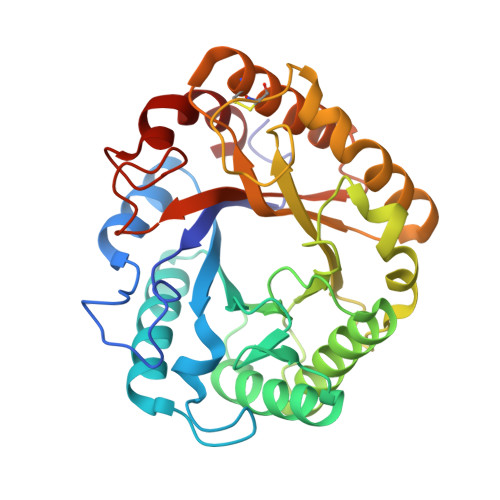Functional and structural analysis of Pichia pastoris-expressed Aspergillus niger 1,4-beta-endoglucanase
Yan, J., Liu, W., Li, Y., Lai, H.L., Zheng, Y., Huang, J.W., Chen, C.C., Chen, Y., Jin, J., Li, H., Guo, R.T.(2016) Biochem Biophys Res Commun 475: 8-12
- PubMed: 27154222
- DOI: https://doi.org/10.1016/j.bbrc.2016.05.012
- Primary Citation of Related Structures:
5I77, 5I78, 5I79 - PubMed Abstract:
Eukaryotic 1,4-β-endoglucanases (EC 3.2.1.4) have shown great potentials in many commercial applications because they effectively catalyze hydrolysis of cellulose, the main component of the plant cell wall. Here we expressed a glycoside hydrolase family (GH) 5 1,4-β-endoglucanase from Aspergillus niger (AnCel5A) in Pichia pastoris, which exhibits outstanding pH and heat stability. In order to further investigate the molecular mechanism of AnCel5A, apo-form and cellotetraose (CTT) complex enzyme crystal structures were solved to high resolution. AnCel5A folds into a typical (β/α)8-TIM barrel architecture, resembling other GH5 members. In the substrate binding cavity, CTT is found to bind to -4 - -1 subsites, and several polyethylene glycol molecules are found in positive subsites. In addition, several unique N-glycosylation motifs that may contribute to protein higher stability were observed from crystal structures. These results are of great importance for understanding the molecular mechanism of AnCel5A, and also provide guidance for further applications of the enzyme.
Organizational Affiliation:
School of Biotechnology, Jiangnan University, Wuxi 214122, China.

















